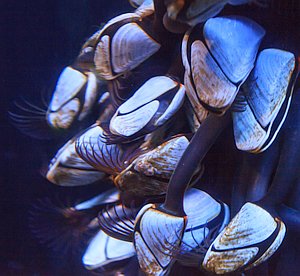Underwater superglue copies barnacles and mussels
We previously noted the very strong underwater glue by which mussels stick to rocks (Mussel muscle, Creation 22(4):7, 2000). The mussel uses protein chains containing the special amino acid dihydroxyphenylalanine (DOPA), plus iron ions (Fe3⁺) which the mussel extracts from seawater. The ions cause the chains to cross-link, and the DOPA units bond very strongly to any surface.

Another creature that bonds very strongly to surfaces is the barnacle. It sticks to ship bottoms and other surfaces by making sticky nanofibres of sheeted proteins. These sheets can bond strongly with both the next protein sheet or with whatever nanofibres it’s sticking to. Both barnacles and mussels are very hard to pry off surfaces.
Engineers at Tufts University in Massachusetts have combined those two design concepts into a single glue. The barnacle-inspired component was silk fibroin from the cocoons of a silk moth. Silk is very similar to the barnacle’s nanofibres. The mussel-inspired component was polydopamine (PDA), with similar properties to the DOPA-rich proteins. Like mussels, Fe3⁺ ions were added. The result even looked like the natural glues under the microscope.
Lead researcher Fiorenzo Omenetto summarized: “The composite we created works not only better underwater than most adhesives available today, it achieves that strength with much smaller quantities of material.” Yet it is also non-toxic and doesn’t need any nasty volatile solvents.
- Presti, M.L. and 3 others, Bioinspired biomaterial composite for all‐water‐based high‐performance adhesives, Advanced Science, 3 Jun 2021.
- Scientists make powerful underwater glue inspired by barnacles and mussels, sciencedaily.com, 3 Jun 2021.


Readers’ comments
Comments are automatically closed 14 days after publication.